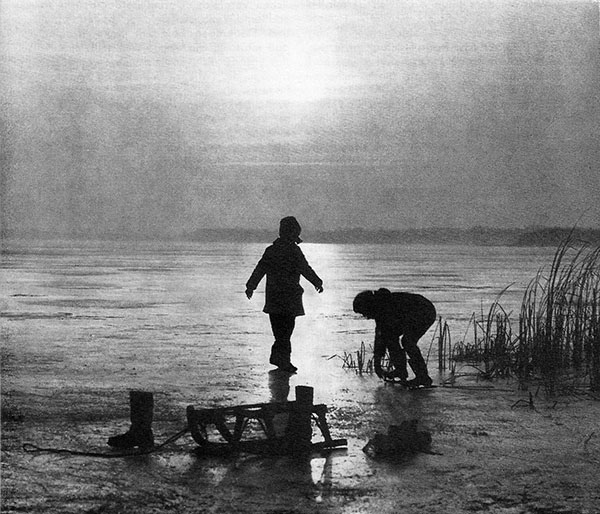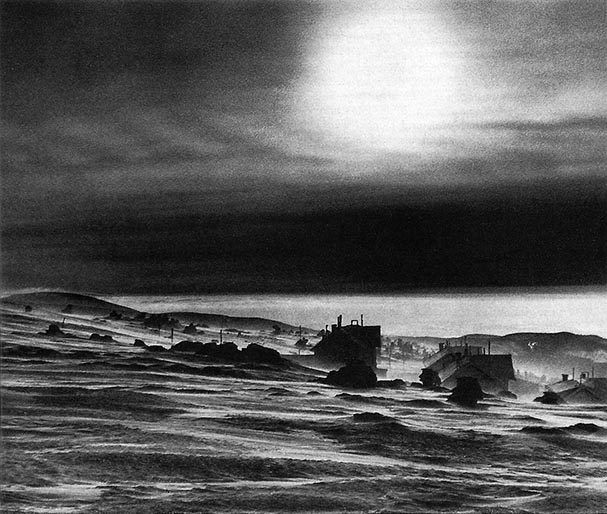by TRA
Using the
Pentacon Six in Cold Temperatures
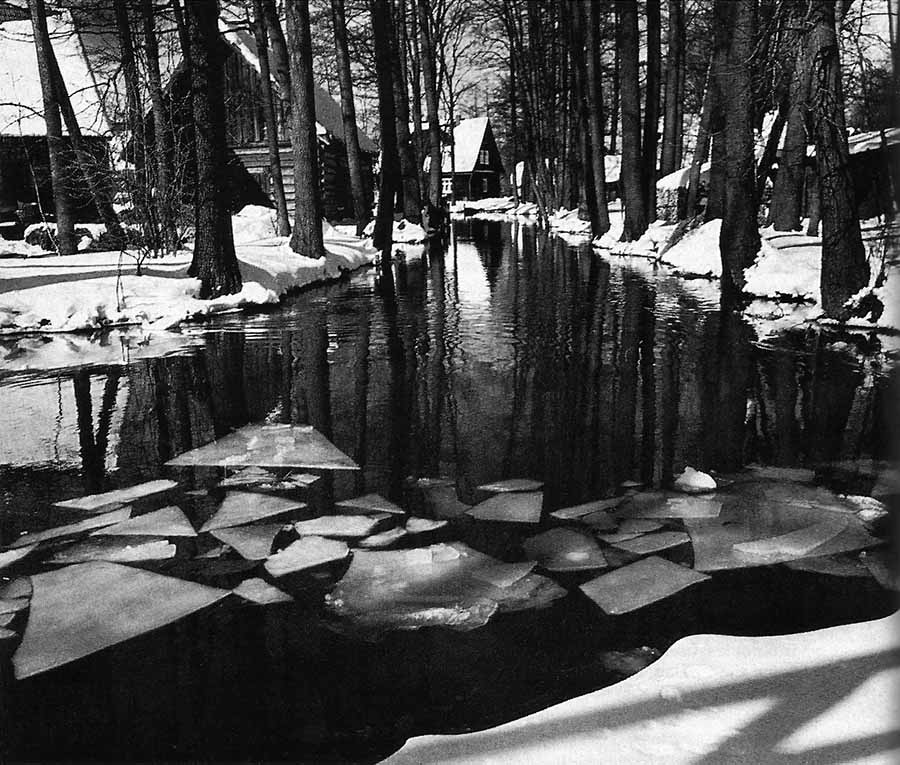
It wasn’t very warm when this picture
was taken!
Title: Vorfrühling (Early Spring)
Pentacon Six picture by Erich Schutt in “Pentaconsix
Praxis” by W G Heyde, 1st Edition 1974 & 2nd
Edition 1975, p. 58
[Vorfruhling.jpg]
In May 2020 I received the following
question from a Pentacon Six user:
| “I just bought a
Pentacon Six that had been recently serviced. Everything has been fine and except that I took it out in 6 degrees celsius weather and the shutter got stuck at 1/125. When buying the camera I was sure to test that speed first and saw no problems. The 1/125 speed was also operational once the camera was brought back inside. Should I expect that this happen every time I take my camera and out and the temperature is <10 degrees?” |
I didn’t feel able to give an authoritative answer to this question, so I wrote to an expert in servicing the Pentacon Six and in lubrication for it, Rolf-Dieter Baier of www.baierfoto.de.
This is the reply that I received from him:
|
This really is the most authoritative answer. However, this picture in W G Heyde’s “Praktisix Buch” shows that camera apparently being used at near-zero temperature.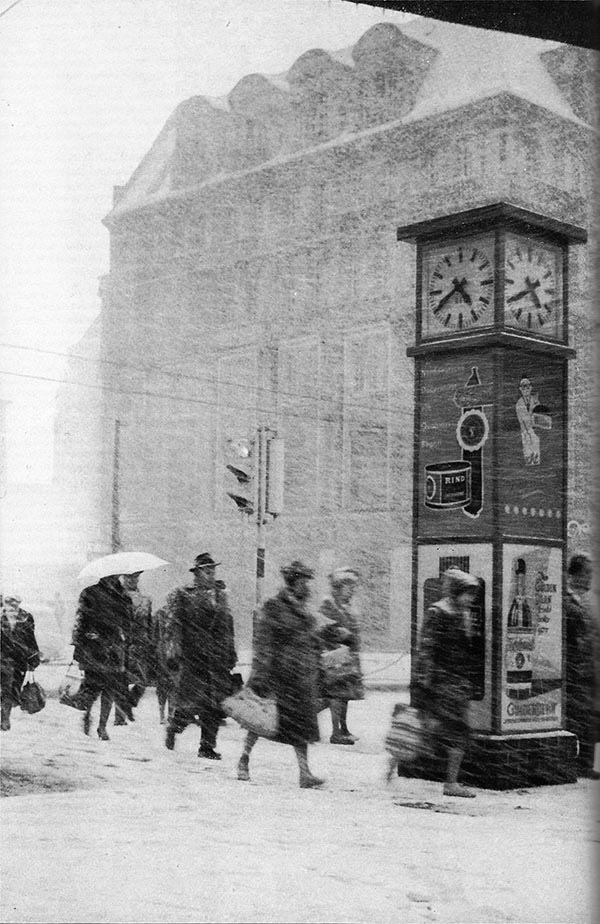 “Schneetreiben,
Matsch, Regen” (“Snow flurries, Mushy snow,
Rain”) Dr W G Heyde “Praktisix Buch” 1964 p. 134
[Praktisix_in_snow.jpg] |
It may of course be
that Dr Heyde took the above photograph while
sheltering in a doorway, as perhaps indicated
by the black area at the top-right of the
picture, or even through an exceptionally
large window. The darker right-hand edge
of the image is not a shutter fault but merely
a shadow that occurred when scanning, at the
join between two pages of the book.
Wise
Precautions
I would point out that
exactly the same care must be taken with modern,
digital cameras, as batteries are very badly affected
by the cold, so these cameras should be transported in
a warm vehicle and when one is out in the cold they
should be kept under thick, outdoor clothing until the
moment of taking the photograph, and put back inside
the clothing immediately after use, so that they again
receive warmth from the body.
On returning to an indoor environment, one should if
possible keep the lens cap on and the camera inside
its case until it has warmed up to the new ambient
temperature. Otherwise, condensation from the
air may form on cold surfaces.
Examples of use of the Pentacon Six in near-zero and sub-zero temperatures in Heyde’s books
In his books on the Praktisix and the Pentacon Six, Heyde includes various photographs taken with these cameras at near-zero and sub-zero temperatures. Here are three more examples.
According to
Wikipedia (here,
consulted on 18th May 2020), the Pamir
Mountains are a mountain range in Central
Asia, at the junction of the Himalayas with
the Tian Shan, Karakoram, Kunlun, Hindu Kush
and Hindu Raj ranges. They are among the
world’s highest mountains and extend through
four countries, Tajikistan, Kyrgyzstan,
Afghanistan and China.
|
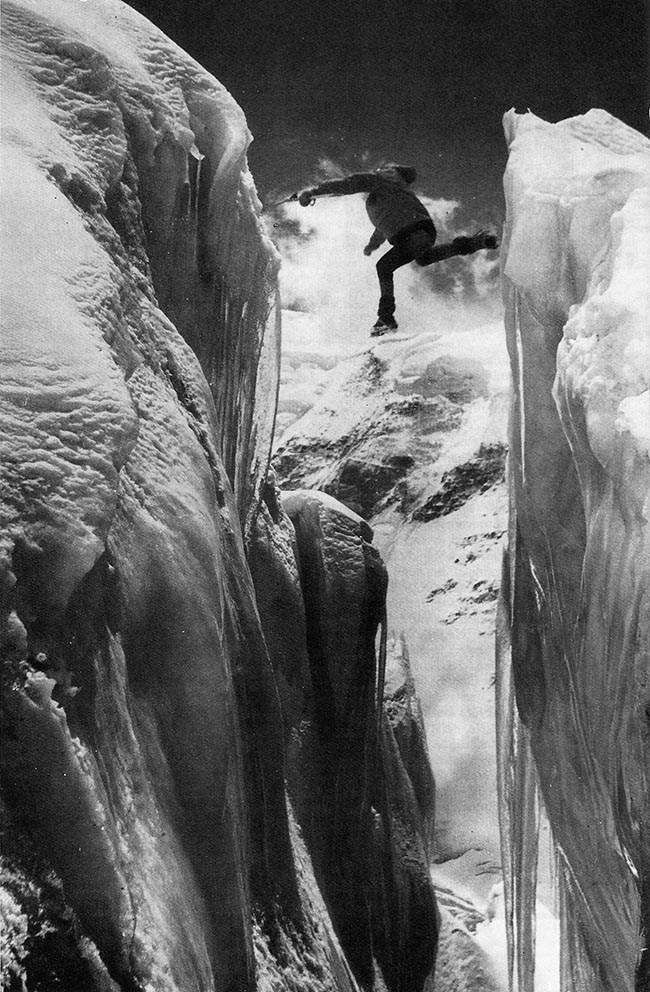 Photograph by Georg Renner “Am Moskwingletscher (Pamir)” (“At the Moskwin Glacier in the Pamir Mountains”) in “Pentaconsix Praxis” 1st edition 1974 and 2nd edition 1975 p. 70, 3rd edition 1980 p. 56 [Pentaconsix_in_ice.jpg] |
|||||
Testing
the camera for cold
weather performance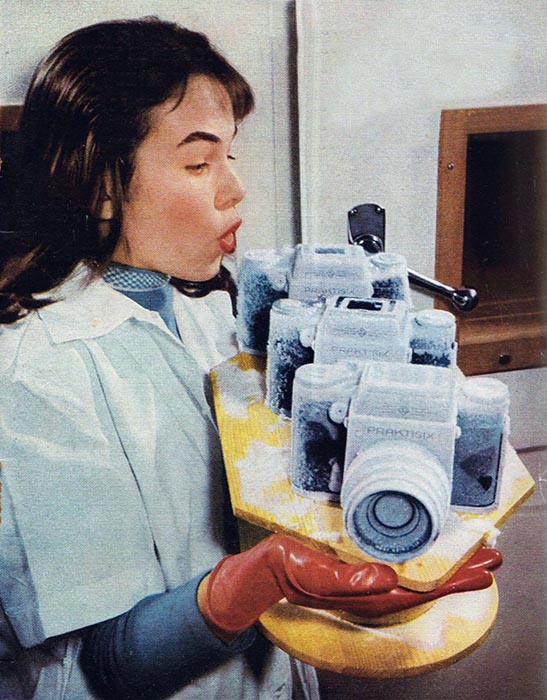 [Praktisix_Klimatest.jpg] |
It is clear that from the earliest days of the development of the Praktisix, the manufacturer, KW, intended that it should perform reliably even in climatologically hostile environments. To this end, they carried out rigorous tests, as evidenced by this photograph first published in 1960 in the first issue for that year of “Fotofalter”, a monthly East German publication described as “for friends of photography”. I came across this photograph in June 2020 at https://zeissikonveb.de/start/kameras/praktina%20und%20praktisix.html, a website with fascinating details on the development of the shutter for the Praktisix and the Pentacon Six. This publication is extremely political, no doubt reflecting the requirements imposed on publications in this communist State. For instance, the following issue has on the Contents page a half-page advertisement about a book on the problems of Marxist aesthetics, while other articles throughout the year praise the successes of communist countries or highlight problems in capitalist countries. Given this background, it is possible to understand more clearly the information printed in the magazine concerning this photograph, which is on the front cover of the January issue. Unfortunately, there is no article on this subject, but merely a caption:
Here is my translation:
Notwithstanding my reservations about the use here of the Praktisix to serve the propaganda purposes of the State, we must assume that the photograph does correspond to testing that did in fact take place. |
| And
in my experience This family photograph from more than forty years ago was taken with my first Pentacon Six (non-TL) with the 80mm Biometar at f/14 and a shutter speed of 1/125 second on Kodacolor II, exposure metering from the Pentacon Six TTL metering pentaprism. Scanned on an Epson Perfection V750 PRO with VueScan at 6400 dpi, the resultant image is approximately 119 cm × 119 cm (very nearly four feet wide × four feet high) and it has a file size of 566 Megapixels – more than ten times that of a modern “Medium Format” digital camera such as the Pentax 645Z or the Fujifilm GFX 50S! That day I spent quite some time out in the snow (and the evidence on one of the hats seems to indicate that some snowballs were thrown!). This was not the only photograph that I took that day – and of course it was not the only occasion when I have taken photographs in snowy or icy conditions with a Pentacon Six. I always carry the camera in the base of its case, and in cold conditions like this I keep the cover on and closed when not actually taking photographs. Wearing a large, thick winter coat, I am able to unzip the front, put the camera inside and zip the front up again. The result is not a fashion statement, but I do keep the camera warm. We have had an 11" × 15" print of this on a wall in our home for years (with slight cropping of the left and the right of the image). In the original (which can’t be appreciated fully on the internet), the gradual gradation of the skin tones (and elsewhere in the image) exemplifies the quality of medium format film, and one could if one wished count individual eyelashes! Conclusion We must all be
grateful to Rolf-Dieter Baier for his decades
of support for the Pentacon Six and the Exakta
66. No-one knows more than he does about
the functioning of this camera, its
lubrication and its correct handling. By
taking the precautions that are required to
protect any delicate precision instrument when
it is to be used in a hostile environment, we
can reliably continue to obtain great
photographs with these cameras! |
|
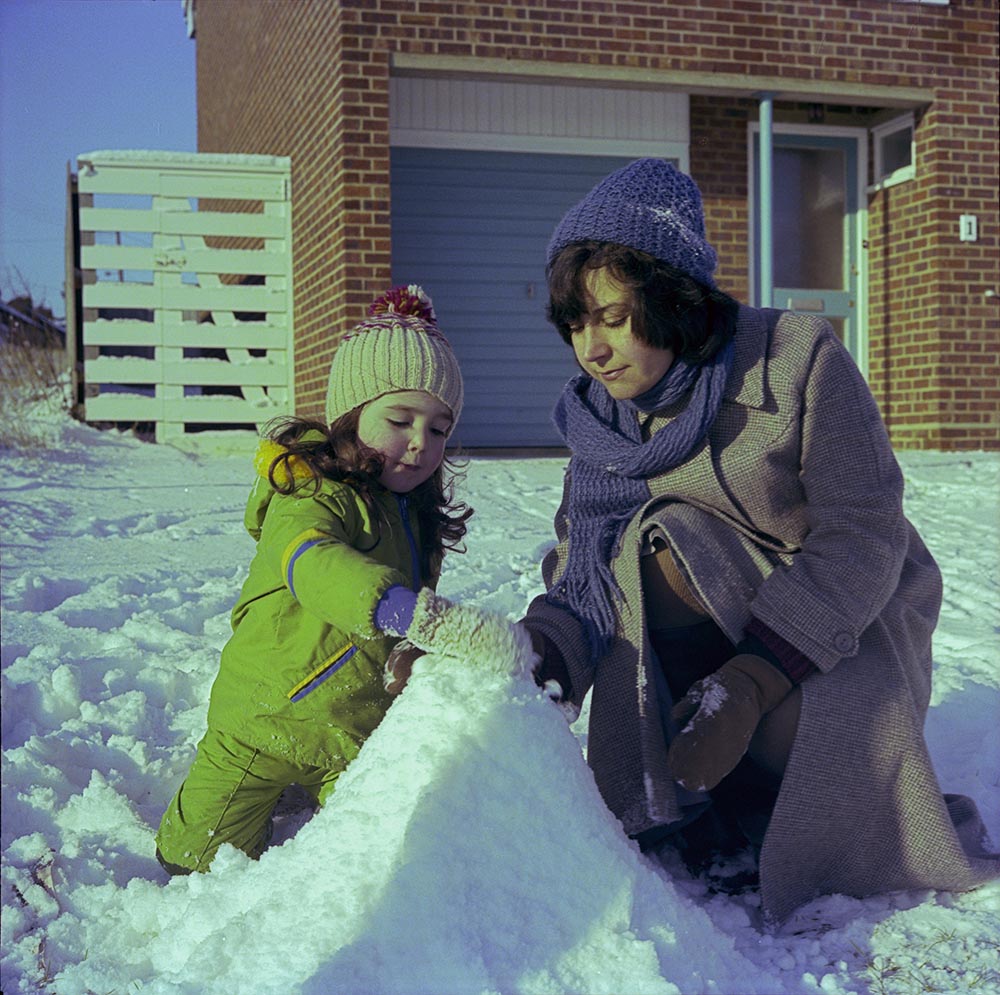 [C60_8.jpg] |
Click the following link to go back to
the instructions.
Click the following link to go back to the Frequently-Asked Questions.
© TRA May 2020 Revised and extended
June 2020
